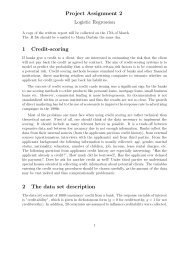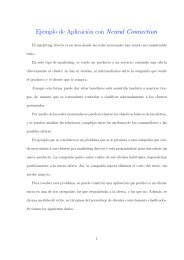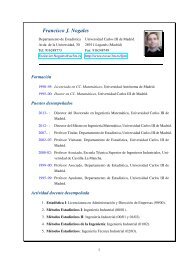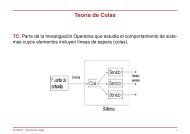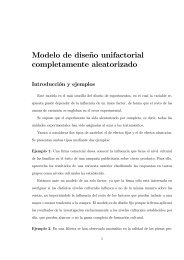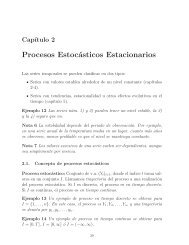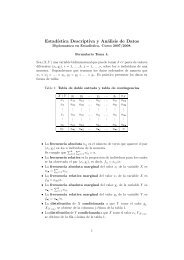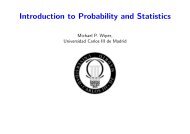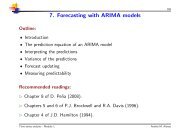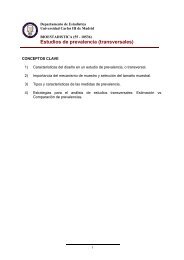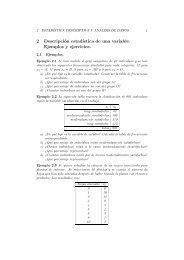Slides Chapter 1. Measure Theory and Probability
Slides Chapter 1. Measure Theory and Probability
Slides Chapter 1. Measure Theory and Probability
You also want an ePaper? Increase the reach of your titles
YUMPU automatically turns print PDFs into web optimized ePapers that Google loves.
<strong>1.</strong>3. SET FUNCTIONS<br />
In the following we define the space over which measures, including<br />
probability measures, will be defined. This space will be<br />
the one whose elements will be suitable to “measure”.<br />
Definition <strong>1.</strong>11 (<strong>Measure</strong> space)<br />
The pair (Ω,A), where Ω is a sample space <strong>and</strong> A is an algebra<br />
over Ω, is called measurable space.<br />
Problems<br />
<strong>1.</strong> Let A,B ∈ Ω with A ∩ B = ∅. Construct the smallest σ-<br />
algebra that contains A <strong>and</strong> B.<br />
2. Prove that an algebra over Ω contains all finite intersections<br />
of sets from A.<br />
3. Prove that a σ-algebra over Ω contains all countable intersections<br />
of sets from A.<br />
4. Prove that a σ-algebra is an algebra that is closed under limits<br />
of increasing sequences.<br />
5. Let Ω = IR. Let A be the class of all finite unions of disjoint<br />
elements from the set<br />
C = {(a,b],(−∞,a],(b,∞);a ≤ b}<br />
Prove that A is an algebra.<br />
<strong>1.</strong>3 Set functions<br />
In the following A is an algebra <strong>and</strong> we consider the extended real<br />
line given by IR = IR∪{−∞,+∞}.<br />
ISABEL MOLINA 8



